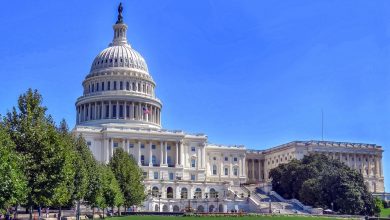Spending Money to Save Time Is the Best Use of Funds
If time is truly more precious than money, then spending money to buy back your time is the wisest trade of all. Here’s an example of overcoming my frugality to live a better life.
Perhaps one of the main reasons I initially didn’t want to go on a family vacation to LegoLand and SeaWorld was because I knew it would cost thousands of dollars. As someone who enjoys investing more than spending, it’s hard for me to feel comfortable dropping ~$5,000 for just three days of vacation when I already feel like I’m on vacation at home attending as a semi-retiree.
However, as someone who’s been actively trying to spend more money since turning 45 (in 2022), I figured, let’s give this trip a go. Spending money on family is much easier than spending money on myself. Baby steps toward decumulation!
Since this was our first time visiting LegoLand in Carlsbad, we didn’t quite know what to expect. We asked other parents and newsletter readers whether we should get the fast passes for $99/person to skip potentially long lines.
About 75% said there was no need because we were going on an off-peak Thursday in October. That sounded reasonable, so I took their advice. After all, we could always buy the fast passes later if the crowds were bad, that is, if the passes were still available.
At 10:10 a.m., we rolled up to the Coastersaurus ride, and the line was absurdly long! See the video for yourself. One of the ushers suggested we head toward the back of the park since it had just opened and the other rides were still relatively empty.
We followed her advice and moseyed over to Emmet’s Flying Adventure ride, a highly anticipated ride after our kids just watched the Lego movie. Unfortunately, another long line. That’s when I decided, screw it. I wasn’t about to spend 30–40 minutes per ride standing in line with a 5- and 8-year-old. Life’s too short. I bought the $396 worth of fast passes for the four of us.
At first, I felt guilty walking past everyone waiting patiently in line, especially the children. I even wondered if I was setting a bad example for my kids by not practicing patience. But then I remembered – $396 is a lot of money! – and got over it. It wasn’t like we lived in Southern California, had a season pass, and could easily get to LegoLand whenever we wanted.
The kids were thrilled to go on more rides, and as any parent knows, happy kids (and a happy spouse) make for a happier life.
Probably Didn’t Need The Most Expensive Fast Pass
Now that we’ve been to LegoLand once, I realize there’s no need to splurge on the $99-per-person Ultimate fast pass again during off-peak season. The Deluxe or even Regular fast pass would’ve been plenty since every ride only has two lines: the regular line and the fast pass line. The ushers don’t seem to differentiate between which tier you bought.
We also found that a couple of rides – Ninjago and Lost Kingdom Adventure – had no wait times at all. Toward the end of the day, I almost wished the lines were longer just so we could feel like we got more value from the upgrade.
So, I’ll chalk up that extra $196 to inexperience. At the time, we were worried about getting nickel-and-dimed by the park if we didn’t buy the top-tier pass. At least now we know, and now thousands of you who’ve never been know too.

Spending On Ubers Instead Of A Rental Car Was Great
Another decision to save time was to use Ubers instead of renting a car. An Uber ride from our house to SFO costs about $30 one way, while long-term parking costs $25/day, and we’d be gone for three days. Plus, it takes an extra 20 minutes to get from the parking lot to security. So taking an Uber was a no-brainer for both time and cost savings. We picked up our kids from school at 3:50 p.m. on Wednesday to catch a 5:30 p.m. flight.
We could’ve rented a midsize car in San Diego for about $70/day ($210 total), but I wanted to avoid the hassle of pickup, parking, and drop-off. In total, we spent about $300 on Uber rides. And frankly, it felt totally worth it, especially compared to the $396 we spent on fast passes.
There’s also something freeing about not being responsible for a large, expensive asset that could get dinged up or stolen. That mental relief alone made the vacation feel lighter. When you factor in the value of time and reduced stress, spending on rideshare services over rentals starts to look like a solid tradeoff.

No Time Saved Flying Business Or First, So We Didn’t
I still can’t justify paying a 50%–200% premium for Business or First Class on short domestic flights, especially when everyone arrives at the same time. If I was going to Hawaii by myself, then maybe.
At 5’10” and ~168 pounds, I can still fit comfortably in Economy seats. My wife and kids fit easily, too since they are much smaller. If we get to sit together in a row of four, or two and two, then even better. My economy seat effectively expands by 25%–50% when I can snuggle next to my loved ones.
Our flight had a 3-and-3 configuration, so I was the one who drew the short straw and sat next to strangers both ways. The flight down was fine, but on the way back, I sat beside a fidgety 14-year-old who kept bumping me and waving his arm in front of my face to point out the window. Still, no big deal. I typed up my free weekly newsletter on the short 70-minute flight.
When we landed, our first Uber kept delaying pickup, so I canceled and called a Lyft, which arrived in two minutes. It felt great not having to wait for an airport shuttle or hunt down our car in long-term parking. Time saved once again.
Still Doesn’t Feel Great Spending $5,000
The investor in me still winces thinking about spending $5,000 on pleasure instead of investing it in the S&P 500 or a venture fund for my kids. I can’t help but run the numbers:
- In 13 years, when my daughter heads to college, that $5,000 could’ve grown to $17,000 if invested in the S&P 500 earning a 10% annual return.
- In 10 years, when my son heads to college, that same $5,000 could’ve compounded to $31,000 if invested in Fundrise Venture earning 20% a year. I’ve invested about $200,000 earmarked for both kids so far, which means I’ve got another $150,000 to go to save them from AI.
- Or, it could’ve paid for a weeklong music or sports camp that builds lasting skills and confidence.
As an investor, there’s always a risk when spending money on something new. You never know if it’ll be worth it until afterward. Of course, investors can also lose money too. But since we all had such a great time in San Diego, I’m at peace with it.
FIRE Is All About Reducing Time Spent on Suboptimal Experiences
After writing about FIRE since 2009, this lesson feels full circle. The whole point of achieving financial independence is to free up our time – to do less of what we don’t enjoy and more of what we love. The more we dislike our jobs or feel that our work lacks purpose, the stronger our desire to FIRE naturally becomes. The same goes for if we’re more sensitive on time’s passing.
The key is to use money as a tool to buy back time, by saving and investing aggressively until we reach our Minimum Investment Threshold. Once we hit that point, work becomes more optional and life becomes more intentional.
Buying back time can mean skipping long lines, avoiding parking headaches, or simply cutting out the small annoyances that drain our energy. Because once time is gone, we can’t buy it back. Now that I’m a parent, the return on all the “sacrifices” I made in my 20s and 30s to build passive income feels absolutely worth it.
When it comes to FIRE, giving up active income by not working is essentially the same as spending money to save time. They’re two sides of the same coin. Accepting this reality makes it much easier to spend once you’re retired.
After all, what’s $5,000 when you’ve already given up earning $50,000, $100,000, $500,000, or even $1+ million a year because you no longer want to trade time for money? In that context, $5,000 is insignificant.
Final Thoughts on Spending for Time Freedom
Spending money doesn’t have to feel bad, as long as it’s purposeful. Spending to save time, create memories, or reduce stress is money well spent. Just be careful that extreme frugality doesn’t lead to lifestyle deflation. It’s an easy trap to fall into after a lifetime of saving diligently.
Given time is more valuable than money, spending money to save time is the logical thing to do. You can always make more money, but you can’t make more time. The trick is finding the balance between the investor in you who wants compounding returns, and the human in you who wants to enjoy life while you can.
So, the next time you hesitate to spend on convenience or experience, ask yourself: Will this purchase help me reclaim time or create lasting joy? If the answer is yes, then it’s probably worth it.
Readers, what are your thoughts on spending more money to save time? What are things to spend money on that could rival or surpass the value of saving time?
Subscribe To Financial Samurai
If you want more time freedom, pick up a copy of my USA TODAY national bestseller, Millionaire Milestones: Simple Steps to Seven Figures. I’ve distilled over 30 years of financial experience to help you build more wealth than 94% of the population, and break free sooner.

Listen and subscribe to The Financial Samurai podcast on Apple or Spotify. I interview experts in their respective fields and discuss some of the most interesting topics on this site. Your shares, ratings, and reviews are appreciated.
Besides my weekly newsletter, you can get my posts in your e-mail inbox as soon as they come out by signing up here. Financial Samurai was established in 2009. Everything is written based on firsthand experience and expertise.




